The Appalachian Mountains are steeped in history and mystery, and few places in the United States can match the allure of Appalachia. From its unique flora and fauna to its rich cultural tapestry, this vast region is a testament to the enduring influence of the rugged mountains that bear its name.
The Appalachian Mountains are among the oldest mountain ranges on Earth. Stretching over 1,500 miles from Newfoundland in Canada to central Alabama in the United States, the Appalachians offer a unique blend of breathtaking vistas, rich biodiversity, and deep cultural history. For locals and travelers alike, the region provides everything from serene hiking paths and charming mountain towns to world-famous scenic routes and a network of National Parks and Forests.
Ancient mountains connect continents and cultures
Millions of years ago, the continent of North America was butted up against today’s Europe in a supercontinent called Pangea. A vast mountain range called the Central Pangean Mountains ran through Pangea. It was old even when dinosaurs walked the earth. Eventually, the supercontinent split up, with the Atlantic Ocean filling the space between.
In the east, these mountains become what we know as the Scottish Highlands and the Caledonian Mountains in Ireland. The western section formed the Appalachian Mountains.
Despite being on different continents separated by a vast ocean, these mountain ranges share a similar geological makeup and appearance. Today’s Scottish Highlands are mostly deforested, but accounts from the 1600s tell of dense and varied forests like those found in the North American range.
Unsurprisingly, the Appalachians lured to its hills and hollers some of the same people who lived in the same range before coming to America.
(Admittedly, this oversimplifies complex geological processes and ignores some fine points of geographic detail. If you want a much more in-depth discussion, take a look at these resources here and here.)
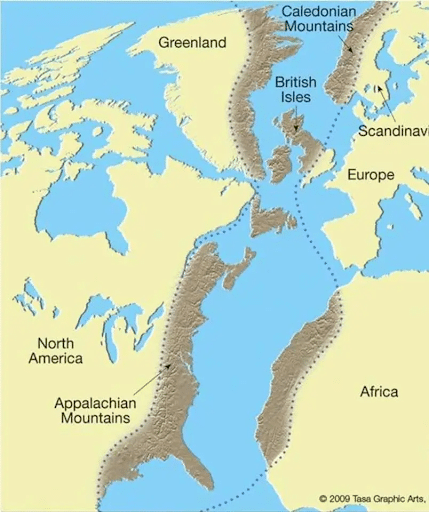
A separate history
The Appalachian Mountains were a refuge for many early American settlers who, fleeing religious and political intolerance, were eager to find a place away from the demands and control of the established governments of pre-Revolutionary War America. While the coastal regions from New York to Georgia were the centers of culture and commerce, with a growing middle class and thriving economies, the people who moved to the mountains were less wealthy (often undeniably poor), had no real prospects for advancement, and were unafraid to venture into the untamed mountain areas where they could trade hard work for the freedom to build their own lives.
This hunger for independence and quiet rebellion against authority became ingrained in the culture of Appalachia. That spirit lives on in the people who call the region home. Appalachians are still known for their rebellious individualism and a reluctant tolerance of authority.
The Scots-Irish flavor in the Appalachian Mountains
Appalachia drew settlers of all types, but the region became a magnet for the Scots-Irish. To this feisty, fiercely independent group of people, the Appalachian Mountains looked like home. In fact, it was home. As discussed above, the Appalachians are part of the same mountain chain that forms the Scottish Highlands and Ireland’s Caledonian Mountains.
The cultural roots of modern Appalachia grew from the same ancient soil as the hardscrabble, rugged mountain soil of Scotland and Ireland. These proud, self-reliant people, prone to fighting for honor (and for entertainment), pledged allegiance to their own families before any government.
The wilds of the Appalachian Mountains offered the kind of separation the Scots-Irish craved. They would settle in the mountains, build communities in the deep hollers, and develop a culture that reflected their ancestry but that was molded by their circumstances. Culture and traditions of hunting, fishing, family first, honor, deep religious belief, music, and storytelling formed the bedrock of early Appalachian life that we still see today.
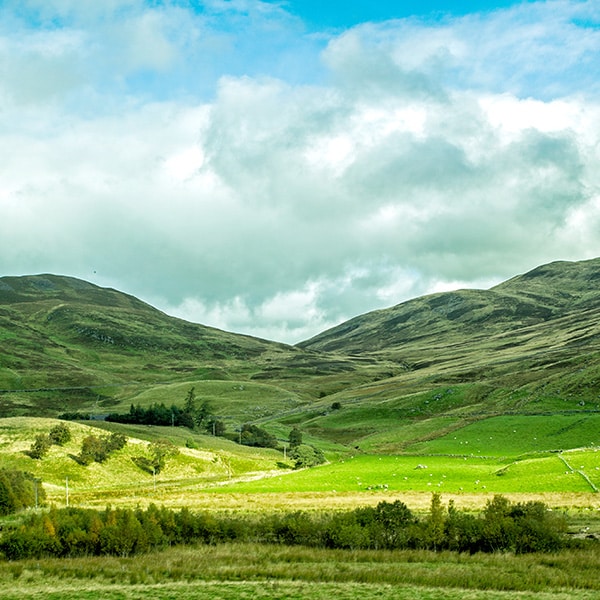
Typical landscape of Scotland
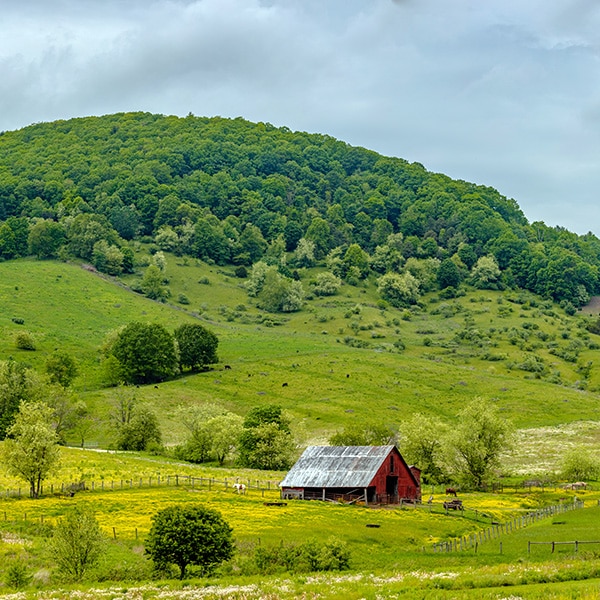
Typical landscape of Appalachia
Cultural and demographic differences
While the culture and demographics change from place to place, the Appalachian Mountains are more homogenous than other parts of the United States. Modern migration of people from place to place in America has changed the makeup of communities nationwide. Nevertheless, while demographics might change from place to place, even today, Appalachians are typically white of European ancestry. The most common ethnic stock is Scots-Irish, but sizeable populations of Germans, Welsh, and English can be found in various regions, each contributing to the unique cultural tapestry of the region.
Mountain people share characteristics no matter where they are, so much of Appalachian culture is based on how life evolved in these rugged areas. The challenging landscape, with its steep hills and deep valleys, has shaped the way of life in the region. Simple activities like building a house or carrying goods from farm to market are complicated by the demands of the landscape. Nowhere is flat. Life is literally an uphill battle. Until recently, travel between cities was on poor roadways that wound and twisted up mountainsides before descending, often rapidly, into deep valleys. Local communities were isolated and insular, often out of necessity and sometimes by choice.
Early Scots-Irish settlers, with their traditional clan orientation, were fine with this arrangement. Family was–and still is–of paramount importance. One is expected to help one’s kin, respect older folks, and remember where one comes from. As we find in close ethnic communities in large American cities, families intermarry, creating a network of family connections that is complex and surprisingly diverse. In Appalachia, it’s common to hear, “He’s kin to me…somehow.”
Out of necessity and convenience, original settlers built their communities to be self-sufficient. Everyone knew their place and had a role in the functioning of the community. While migration into larger cities was relatively common until modern times, it was uncommon for someone new to move into the Appalachian countryside. Locals were distrustful of outsiders. This resilience and self-sufficiency of the Appalachian communities are genuinely inspiring.
In some ways, that’s still true today. Visitors and transplants should bear that in mind when they move to a community that has existed just fine without them for 200 years!

Accents change every few miles
It is said that every holler in Appalachia had its own accent and terminology. This was due to the remoteness and separation of communities from the rest of America. Words and accents evolved and were idiosyncratic. It wasn’t uncommon to hear someone say they could not easily understand someone who lived just over the mountain. This linguistic diversity adds a fascinating layer to the Appalachian culture.
As one finds in the United Kingdom, television helped flatten and make generic the American language and, to some degree, accents. Once remote communities now have easy access to how the rest of the country talks. The Internet and social media have spread slang and linguistic changes to people nationwide.
But, accents in Appalachia are still distinct and strong. More importantly, the people are proud of how they speak.
While Southerners can pick out specific regional accents, Americans generally label the Appalachian accent (south of Pennsylvania) as generically “Southern.” People in Southern states can easily tell if someone is from the coast, piedmont, or mountains. In the mountains, locals can pick out a Polk County, Tennessee, accent from a Blue Ridge, Georgia, accent, even though they are separated by only 15 miles.
As is always the case, YOU don’t have an accent. The other guy does. Recently, a friend from Blue Ridge, Georgia, said he was talking with someone from Dalonegha who “had a real Appalachian accent.”
Note to visitors
The topic of accents leads to a few common misunderstandings for visitors to Appalachia, in particular, but the South in general.
- Please don’t visit and put on a Southern accent. People here can tell that you are from Long Island. It’s insulting. Seriously.
- A Southern accent does not indicate a lack of education. There is only a 4% difference between the number of Southerners with higher degrees and the national average. (Statistical Atlas) Southern states have a higher high school graduation rate. And some of our nation’s greatest writers are from the South: Mark Twain, William Faulkner, Cormac McCarthy, Alice Walker, Harper Lee.)
Y’all is spoken here
The term “y’all” is the preferred collective noun here in Appalachia. It generally refers to two or more people. You might hear it in, “Y’all aren’t from here.” In cases where a speaker means “every single person in range of my voice,” you will hear the supercollective noun, “All y’all.” There are other variations, though. “Yins” means the same as “y’all” and is often heard in the mountains…and in Pittsburgh. But they are not related.
Culture
Music in the Appalachian Mountains
Appalachian culture’s music tradition is derived directly from the region’s Scots-Irish roots. Bluegrass and country music evolved, both in terms of instruments and melodic structure, from Irish and Scottish folk music. (Here is a terrific BBC documentary on the influence of Scots-Irish traditional music on American music.) These were people who loved music and song, whose lyrics told stories of faith, love, and history. People on the move had to adopt instruments that could be carried easily. Pianos and cellos were out. Fiddles and banjos were in!
Scots-Irish immigrants brought with them their fiddles and the nasal tone that is still a hallmark of bluegrass singers. German immigrants brought harmonicas and dulcimers. Banjos, a bluegrass and country music staple, were derived from African stringed instruments.
Country music has always been a fixture in the Southern United States, and the Appalachian Experience is nothing without music. Look for festivals and music venues on this site, and take advantage of the easy access to live performances.

Mountain Music and Festivals
Old-time string music, bluegrass, and gospel have deep roots in Appalachian culture. You’ll find festivals like:
- Bristol Rhythm & Roots Reunion (TN/VA)< – Celebrates the "Birthplace of Country Music."
- MerleFest (NC) – A gathering for Americana, folk, and bluegrass fans.
- Mountain Dance and Folk Festival (NC) – The oldest folk festival in the country.
Painting and the visual arts
Anyplace with landscapes as breathtaking as Appalachia is bound to inspire art to capture it. Every county and sizeable town in the mountains has art shows, galleries, and festivals. Nature is the most common subject, but folk art has a long tradition in the mountains. Look for art festivals on this site and make time to see the vibrant art scene in the mountains.

R.E.M. “Reckoning” album cover by Howard Finster
Probably the most famous Appalachian folk artist was Baptist minister Howard Finster, who used his idiosyncratic art as a way to preach the gospel. He was the most prominent figure of the “Outsider Art” movement, with roots in naive painting styles. He painted album art for Georgia’s R.E.M. and Talking Heads.
Clay Burnett’s stunningly complex pine needle basketry blurs the line between craft and high art. A native of Dalton, Georgia, Burnett is now based in Columbia, South Carolina (outside of Appalachia), and has developed a worldwide fame.
The Geography of the Appalachian Mountains
The Appalachian Mountain range stretches over 1,500 miles from Newfoundland and Labrador in Canada all the way to central Alabama. It touches 14 U.S. states and weaves through major regions, including:
- North: Starting in Newfoundland and Labrador, Canada, the range continues south through parts of New England, particularly Maine, New Hampshire, Vermont, and Massachusetts.
- South: The Appalachian Mountains end in central Alabama, with the southernmost ridges tapering off in Georgia and Alabama.
- East: Bounded by the Atlantic Coastal Plain.
- West: The range extends to the Interior Plains and the Ohio River Valley.
Key states that are part of Appalachia include Pennsylvania, West Virginia, Virginia, Kentucky, North Carolina, Tennessee, and Georgia.
Climate: plan for all kinds of weather
Since the Appalachian Mountains span nearly the entire length of North America, no single climate exists from north to south. As a general rule, winters are cold, summers are hot, it rains a lot in the spring and summer, and it snows in the winter. But all of that might not apply wherever and whenever you visit!
On a local level, the weather changes often. There might be rain on the west side of a mountain but sunshine on the east. Elevation changes can also affect the local weather. It might be warm at the base of a mountain, but the summit cool. Or, you might climb above a chilly blanket of fog at the base of a mountain into hot sun.
In short, you just don’t know what the weather will be. Hope for the best, expect the worst. Wear and bring layers so you can adjust as the day progresses.
Regional climate
Northern Appalachians
In areas like New England and southern Canada, the climate in the Appalachian Mountains is generally humid continental. Winters can be harsh, with heavy snowfall and freezing temperatures, while summers are mild and pleasant. These areas are popular for fall foliage and winter sports.
Central Appalachians
States like Pennsylvania and West Virginia offer four distinct seasons. Winters bring moderate snow, especially in higher elevations, and summers are warm and humid. Spring and fall offer a beautiful mix of blooming wildflowers and colorful foliage.
Southern Appalachians
As you move south into North Carolina, Tennessee, and Georgia, the climate transitions to humid subtropical, particularly in the foothills. Higher elevations, like those in the Great Smoky Mountains, stay cool year-round. Summer hiking here is delightful due to the cooler mountain air.
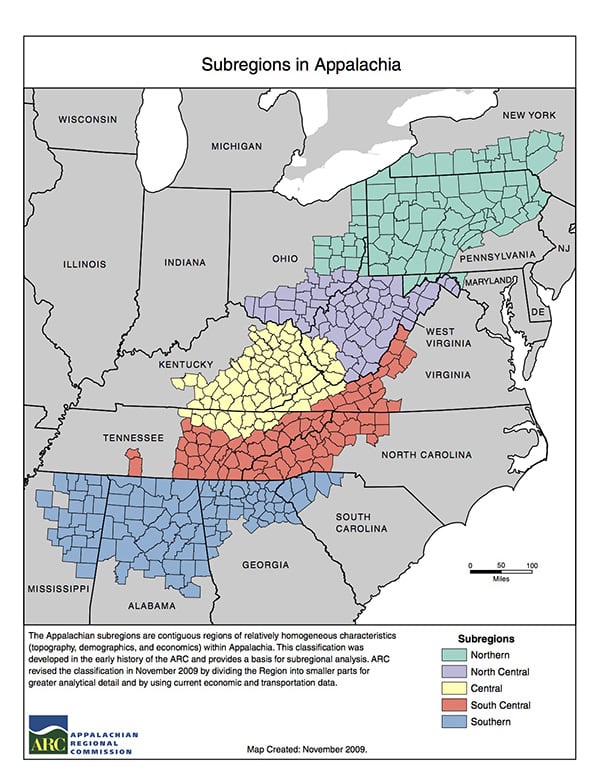
Appalachian Mountains Must-See Destinations and Natural Wonders of
From rugged peaks to charming towns, the Appalachian Mountains are dotted with attractions that cater to adventurers, families, and nature lovers alike.
The Appalachian Trail
The AT is the Big Kahuna of trails in the Appalachian region. It’s a monster of a trail. Spanning approximately 2,198 miles from Springer Mountain in Georgia to Mount Katahdin in Maine, the AT is one of the world’s most iconic long-distance hiking trails. It takes most thru-hikers 5 to 7 months to complete, but countless visitors enjoy day and shorter section hikes.
Popular Access Points:
- Clingmans Dome, TN/NC – The highest point on the trail.
- McAfee Knob, VA – A famous photo-op with sweeping views.
- Mount Greylock, MA – The highest point in Massachusetts.
- Bear Mountain, NY – Near New York City, has rich historical significance.
National Parks and Forests
Great Smoky Mountains National Park (TN/NC)
America’s most visited national park, the Smokies are known for misty peaks, old-growth forests, and rich wildlife. Popular stops include:
- Cades Cove – Scenic loop with historic buildings and wildlife viewing.
- Clingmans Dome – Offers panoramic views at 6,643 feet.
- Roaring Fork Motor Trail – A scenic drive perfect for spotting bears and waterfalls.
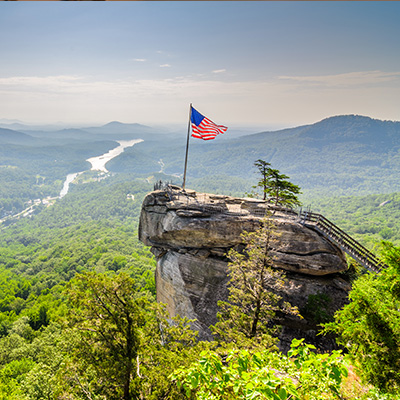
Chimney Rock State Park, North Carolina
Other Notable Parks and Forests:
- Mount Mitchell State Park (NC) – Home to the highest peak east of the Mississippi (6,684 ft).
- George Washington & Jefferson National Forests (VA/WV) – Endless hiking, camping, and wildlife watching.
- Monongahela National Forest (WV) – Rugged landscapes and unique bog ecosystems.
Scenic Byways and Highways
Driving through the Appalachians is an experience in itself. Wind through tunnels of trees, past vibrant valleys, and alongside roaring rivers.
Blue Ridge Parkway
Known as “America’s Favorite Drive,” this 469-mile route connects Shenandoah National Park in Virginia to the Great Smoky Mountains in North Carolina. Top stops include:
- Mabry Mill – A historic gristmill and cultural site.
- Craggy Gardens – Stunning rhododendron blooms in spring.
- Linville Falls – A must-see waterfall with several hiking trails.
Cherohala Skyway (TN/NC)
A lesser-known gem offering high-elevation views and minimal traffic. Ideal for motorcyclists and fall color chasers.
The Highland Scenic Highway (WV)
Located in the Monongahela National Forest, this 43-mile route passes through untouched wilderness with panoramic overlooks.
Scenic Byways and Highways
Driving through the Appalachians is an experience in itself. Wind through tunnels of trees, past vibrant valleys, and alongside roaring rivers.
Blue Ridge Parkway
Known as “America’s Favorite Drive,” this 469-mile route connects Shenandoah National Park in Virginia to the Great Smoky Mountains in North Carolina. Top stops include:
- Mabry Mill – A historic gristmill and cultural site.
- Craggy Gardens – Stunning rhododendron blooms in spring.
- Linville Falls – A must-see waterfall with several hiking trails.
Cherohala Skyway (TN/NC)
A lesser-known gem offering high-elevation views and minimal traffic. Ideal for motorcyclists and fall color chasers.
The Highland Scenic Highway (WV)
Located in the Monongahela National Forest, this 43-mile route passes through untouched wilderness with panoramic overlooks.
Historic Towns to Visit
- Blue Ridge, GA – One of the most popular destinations in the Appalachian Mountains, Blue Ridge is a short hop from Atlanta and has several outdoor activities, making it a hugely popular vacation spot.
- Harpers Ferry, WV – A picturesque town with Civil War history and stunning views where the Shenandoah and Potomac Rivers meet.
- Asheville, NC – A hub for arts, food, and mountain adventure.
- Floyd, VA – Known for its Friday Night Jamboree and artisan community.
- Gatlinburg, TN – A gateway to the Smokies with attractions for all ages.
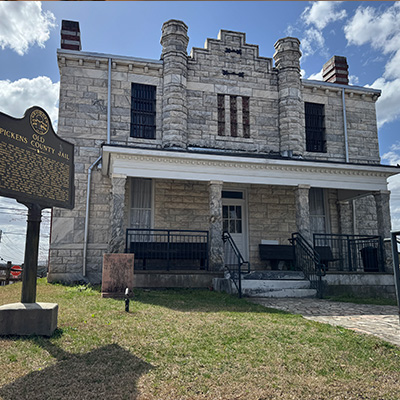
Old Pickens County jail in Jasper, GA
Flora, Fauna, and Natural Diversity
The Appalachians are a biodiversity hotspot, particularly in the southern portion. Some highlights include:
Wildlife You Might See
- Black bears
- White-tailed deer
- Wild turkeys
- Salamanders (the region is home to more species than anywhere else in the world)
- Bald eagles and peregrine falcons
Plant Life
- Rhododendrons and mountain laurels are in bloom from late spring through summer.
- Vibrant fall foliage, especially in October
- Dense deciduous forests mixed with evergreens at higher elevations
Taste and Shop Local
You can find all of the chain stores and restaurants in Appalachia that you have back home. But why would you want to go to them when the region is full of culinary gems and handcrafted treasures? Whether you are relocating to the Appalachian region or just visiting, shop and eat local. Supporting local businesses is critical to keeping the character of every location alive and well. Don’t let special places in Georgia or North Carolina look like suburban New York or Los Angeles!
Local Eats:
- BBQ – No other category of food has a more distinct regional flavor and style than BBQ. How it’s cooked, the sauces, the presentation… are unique to each restaurant, city, or state.
- Try them all: cornbread, fried okra, baked beans, fried green tomatoes…try them!
- Fresh apple cider, chow-chow, homemade jam and preserves. Most farm stores in Appalachia have some versions of these that are made with local ingredients.
- Ramps (wild onions) in spring…fresh or pickled are mountain classics.

Crafts & Markets:
- Shows feature woodworking, quilting, basketry, painting, or pottery
- Farmer’s markets are great places to find fruits and vegetables grown with love–and without commercial pesticides! Look for local honey, produce, grass-fed meat, and artisan goods.
- Antique stores can be found in most towns. Do not think, “Old junk.” A lot of what you find will make great additions to your home decor, and many old kitchen and workshop tools still have many years of useful life ahead of them.
Plan Your Adventure with Appalachian Experience
Whether you’re a lifelong resident or first-time visitor, there’s always something new to discover in the Appalachian Mountains. From mountaintop views and wildflower-covered meadows to historic main streets and regional festivals, the region is as varied as it is beautiful.
At Appalachian Experience, we make it easy to plan your trip or find what’s happening in your backyard. Use our listings to:
- Find local businesses, from outfitters to eateries
- Check out events and festivals across the region
- Connect with government resources and park updates
- Discover hidden gems you won’t find in a travel brochure
Why come to the Appalachian Mountains
The Appalachian Mountains are more than just a beautiful natural backdrop—they’re a living, breathing storybook of music, history, and adventure. Whether hiking a rugged trail or sipping cider at a mountain festival, the region offers something for everyone.
If you are just vacationing, don’t be surprised if you find yourself looking at mountain real estate listings when you get back home. It happens to most visitors. If you have fallen under the spell of the mountains, then you already know.
In any case, we’ll see you on the trail…or at a winery…or listening to some music.
Bibliography
The Scots-Irish musical legacy in the USA https://www.youtube.com/watch?v=oN3H2JPqKRY&t=77s
https://statisticalatlas.com/region/South/Educational-Attainment

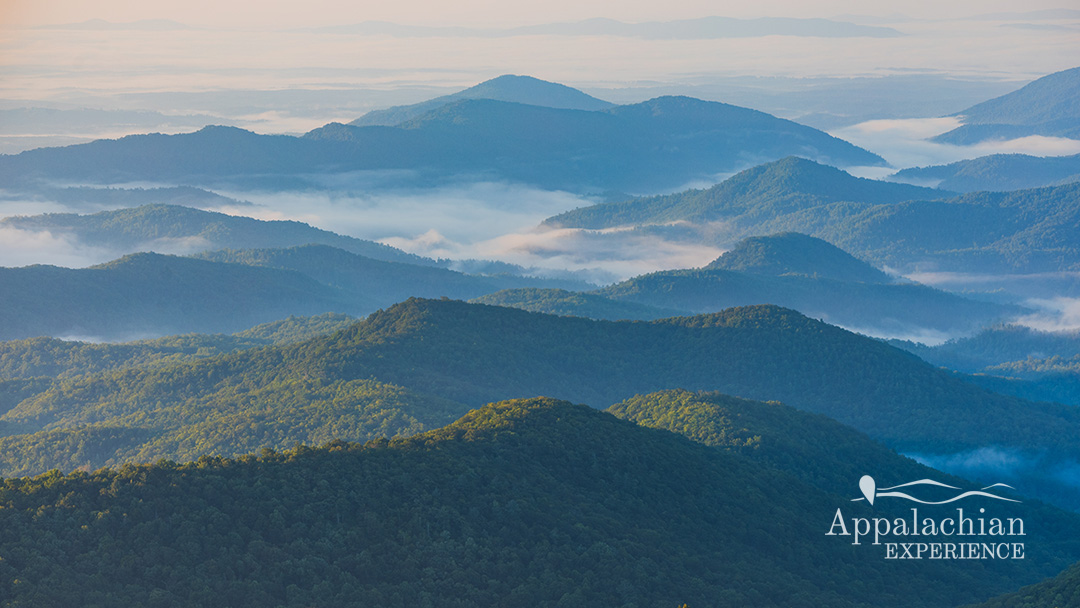

0 Comments